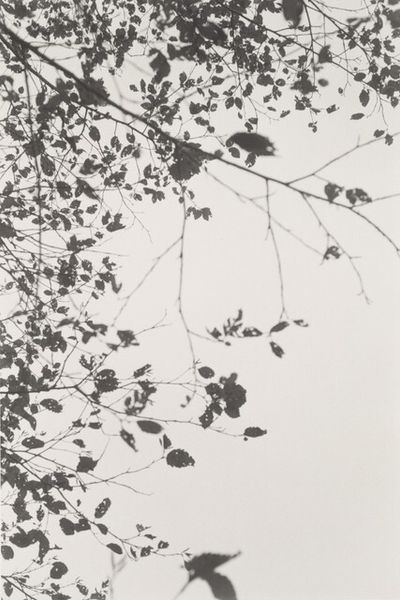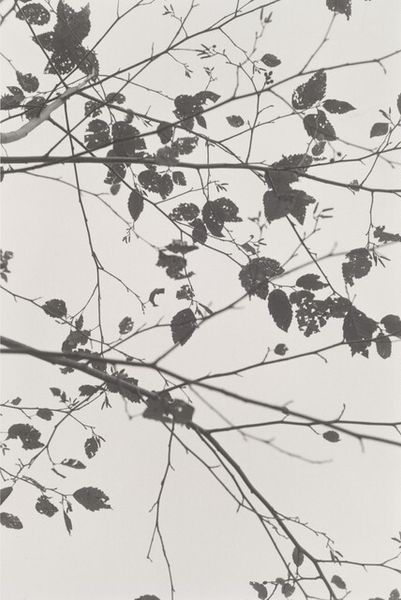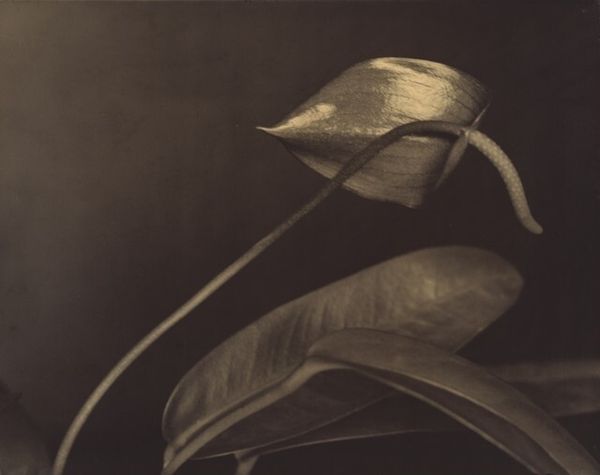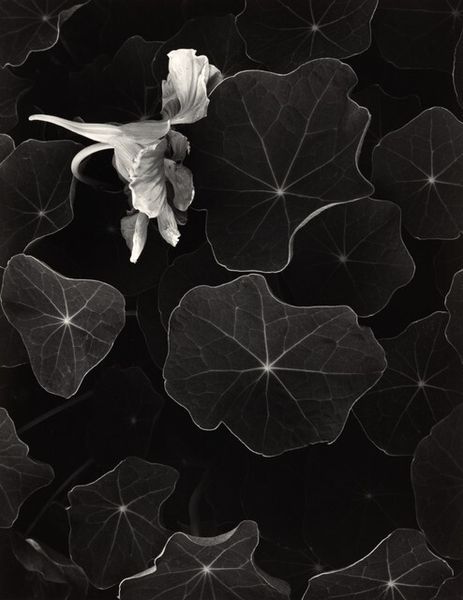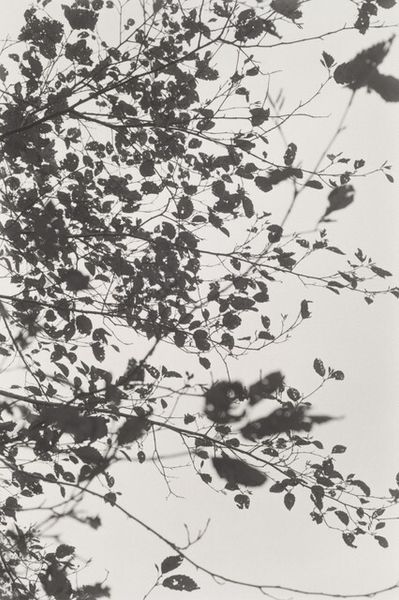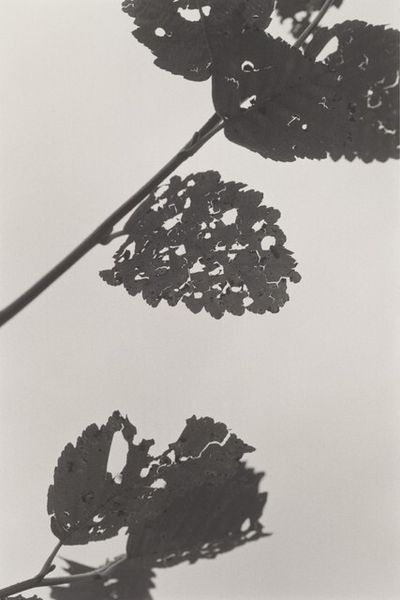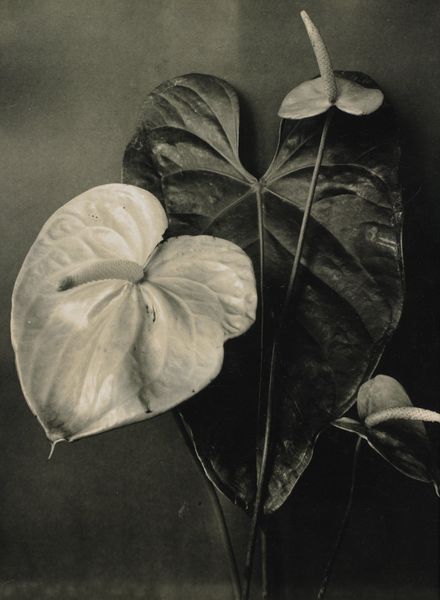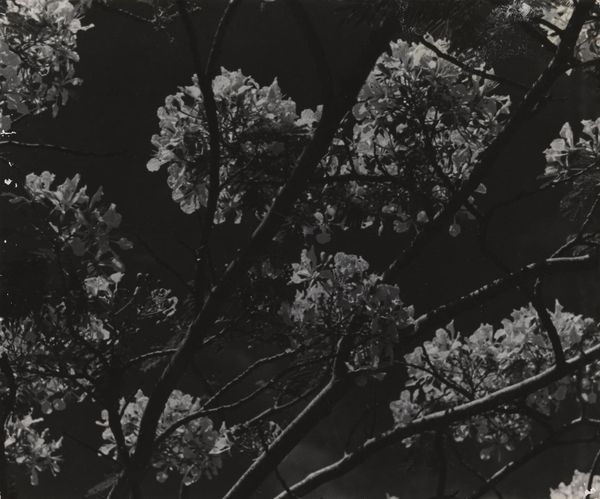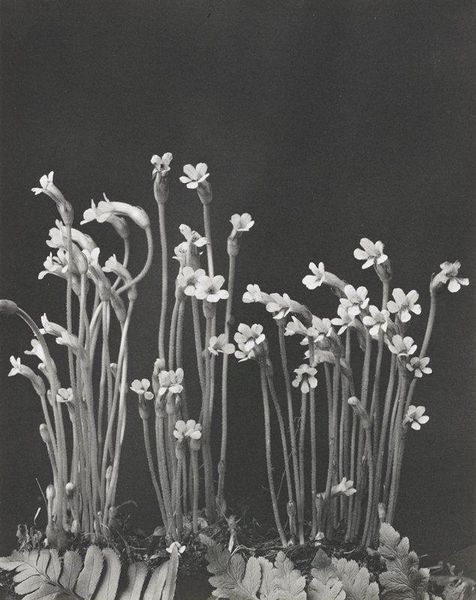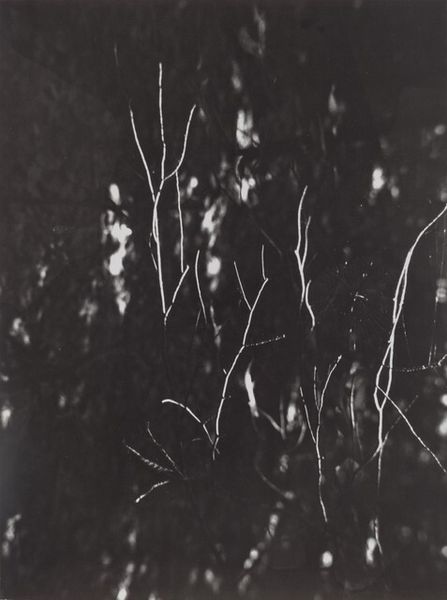
Dimensions: image/sheet: 24.1 × 30.8 cm (9 1/2 × 12 1/8 in.) mount (1): 25.1 × 31.7 cm (9 7/8 × 12 1/2 in.) mount (2): 55.9 × 40.9 cm (22 × 16 1/8 in.)
Copyright: National Gallery of Art: CC0 1.0
Editor: Riso Itano's "Water Lily #3," taken around 1930, is a gelatin-silver print that almost feels like a dream. The sepia tones give it such a sense of nostalgia. The lily pads and flower float serenely, yet there’s also something a little melancholic about it, like a memory fading. What do you see in this piece? Curator: Ah, yes, fading memories. It speaks to that, doesn’t it? To me, it’s an embrace of imperfection. Think of the Japanese aesthetic of *wabi-sabi*—finding beauty in transience and flaws. The muted colors, the soft focus...it’s less about sharp, photographic realism and more about evoking a mood, a feeling of quiet contemplation. Do you get that sense of quiet? Editor: Definitely, it's very meditative. It’s interesting that you bring up Japanese aesthetics. How much of that was influencing photographers at this time? Curator: Profoundly so. Many artists were seeking alternatives to purely representational photography. They were inspired by Japanese painting, and printmaking with their emphasis on composition, tone, and texture. Think of it as trying to paint with light and shadow. Notice how the composition leads your eye gently around the image. It feels composed, considered. Not just a snapshot, wouldn't you agree? Editor: I see what you mean. It feels deliberate, not accidental at all. I hadn't really thought about the Japanese influence so directly, but it makes so much sense. Curator: It’s subtle, but pervasive. Photography allowed new ways to represent the natural world that was also in tune with deeply held cultural and aesthetic values. Perhaps that’s part of what creates the melancholic beauty we feel when we view it today? Editor: Absolutely. I think understanding the context adds another layer of appreciation for this image. Curator: Precisely. Every artwork is a product of a rich history of artistic traditions and innovations. Isn't that rewarding?
Comments
No comments
Be the first to comment and join the conversation on the ultimate creative platform.


